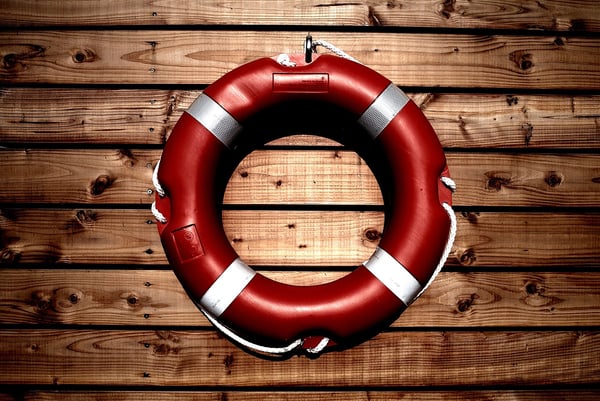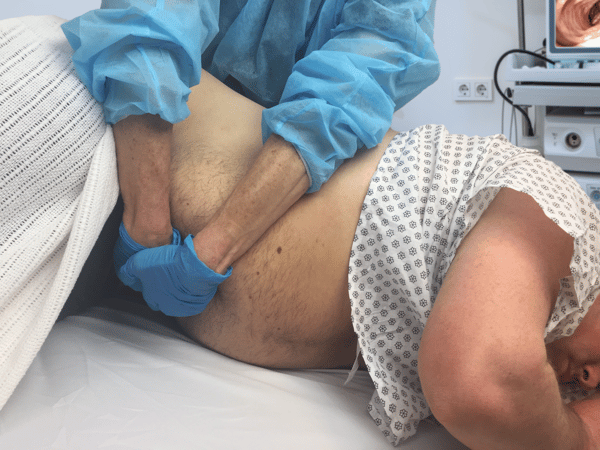VA Leads the Way in Safety
by Larissa Biggers, on June 15, 2018
There’s a saying about nurses: Save one life, you’re a hero. Save 100, and you’re a nurse. Nurses are a dedicated bunch, routinely sacrificing their safety for that of their patients. Most have impacted thousands of lives.

Risky Business
There is, unfortunately, another side of the story. In the line of duty, registered nurses sustain more musculoskeletal injuries than the average worker. In fact, according to the U.S. Bureau of Labor Statistics, nursing has the highest rate of nonfatal occupational injuries compared to all other professions. A 2017 American Nurses Association Health Risk Appraisal found that 51% of surveyed nurses experienced musculoskeletal pain at work, and 45% pointed to lifting/repositioning heavy objects (i.e., patients) as a significant health and safety risk for nurses.
But nurses tend to put others’ needs before their own. As a Nebraska nurse notes, "It's kind of ingrained in you when a colleague asks for help, you go and you help. You don't even think twice because they're in trouble. We're a team. You don't leave a man down." A technician may need help moving an obese patient to a bed, an endoscopist might ask a nurse to reposition a sedated patient or apply abdominal pressure during colonoscopy—typically these tasks are performed without hesitation or question. But should they be?

All in a Day’s Work: Endoscopy nurse applying sustained abdominal pressure during colonoscopy
The VA Takes a Stand
Efforts to alter the status quo have been thwarted. For years the American Nurses Association has advocated for a federal law mandating nationwide standards to protect nurses from injuries. Although 11 states have enacted such measures, there is no protection at the federal level.
The U.S. Department of Veterans Affairs’ Safe Patient Handling and Mobility (SPHM) directive aims to change all this. The goal of the program is to reduce manual patient handling injuries through, among other means, SPHM technology. Although this term sounds, well, technical, it actually refers to medical supplies and equipment that help keep staff and patients safe during patient transfers, repositioning, and transport. Examples of SPHM technology include everything from ceiling-mounted lifts to simple friction-reducing devices, as well as devices designed to make specific procedures (e.g., colonoscopy) safer for everyone involved.
Healthy Nurses = Healthy Patients
A 2010 whitepaper examined several trials on safe patient handling programs that include SPHM-type technology. All point to this equipment “as the key risk reduction element; their results have shown great success in reducing staff injuries and resultant lost work time and modified duty days. Data on job satisfaction showed increased feelings of professional status and decreases in task requirements.” The authors noted that such positive outcomes were thought to improve nursing retention and recruitment.
And when staff are healthier and happier, they can focus more of their energy on patient care. In fact, the paper suggests that the use of SPHM equipment may offer additional advantages, such as:
- Improved quality of life for both patients and caregivers
- Better patient outcomes
- Economic benefits from avoiding adverse events related to manual patient handling
Leading the Way
By its own admission, the VA is a leader in the field of safe patent handling. Not only are they practicing what they preach, they are also making a concerted effort to measure the effectiveness of their programs. In an online memo, Dr. Carolyn Clancy remarked, “National data collected from both inside and outside the VA health care system show that there is no question that safe patient handling reduces staff injuries and saves money. It’s good for Veterans because it helps ensure that healthy employees are on the job to deliver high-quality patient care, and it’s good for staff because it makes moving patients far safer. As the nation prepares for future nursing shortages, our emphasis on employee health and safety gives us a clear advantage in the competitive world of staff recruitment.”

Yes, the VA has come under fire in recent years for a variety of issues, but make no mistake; they are innovators in delivering health care safely, for both nurses and patients.


